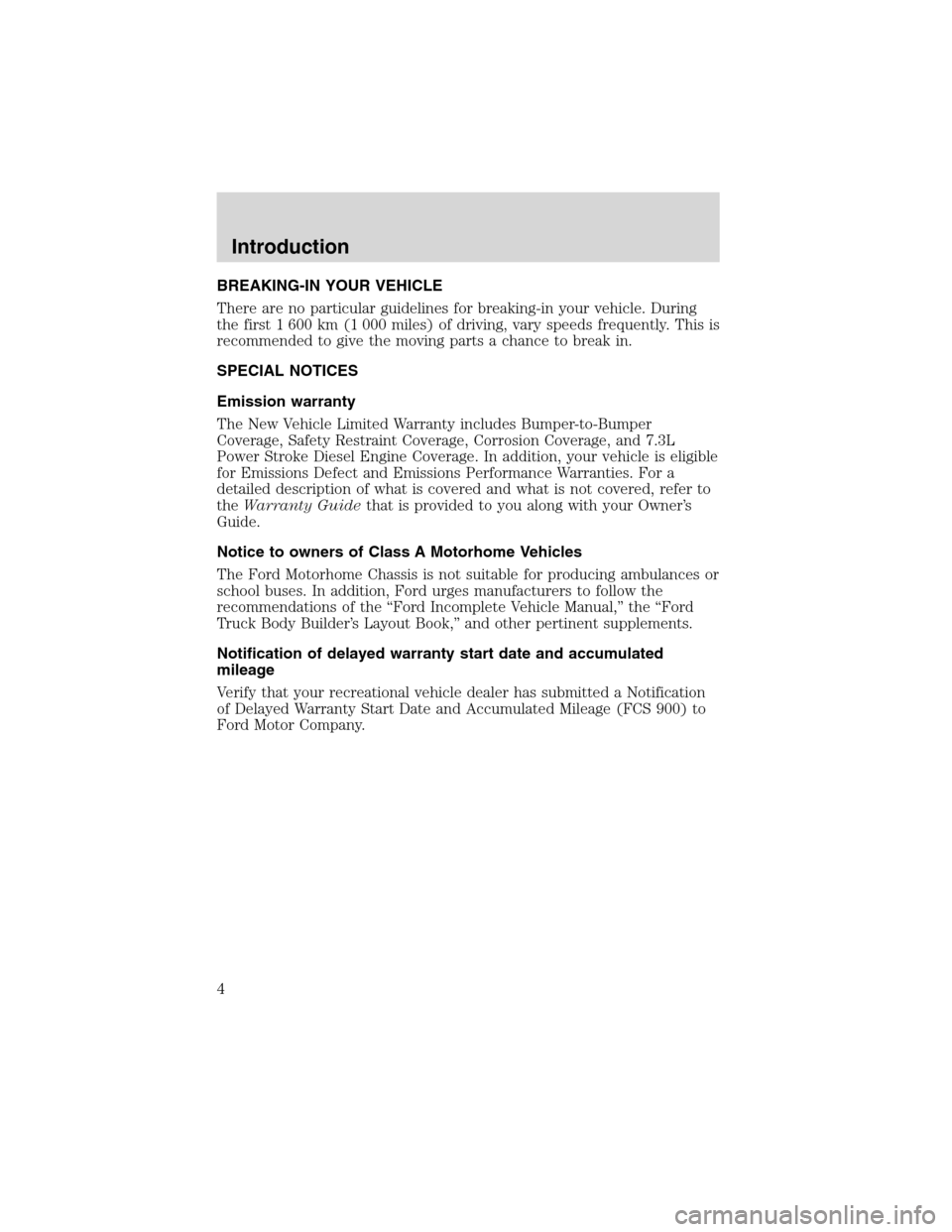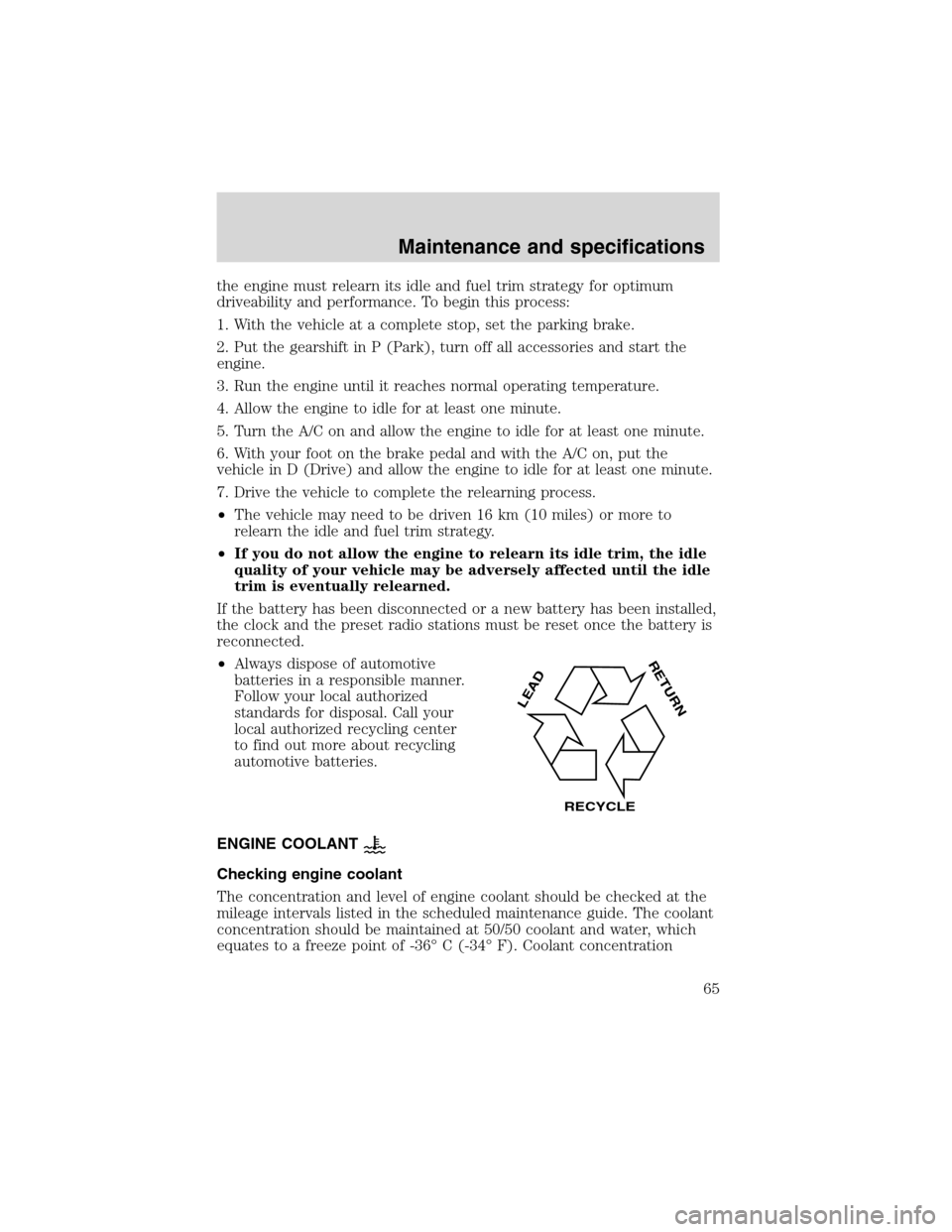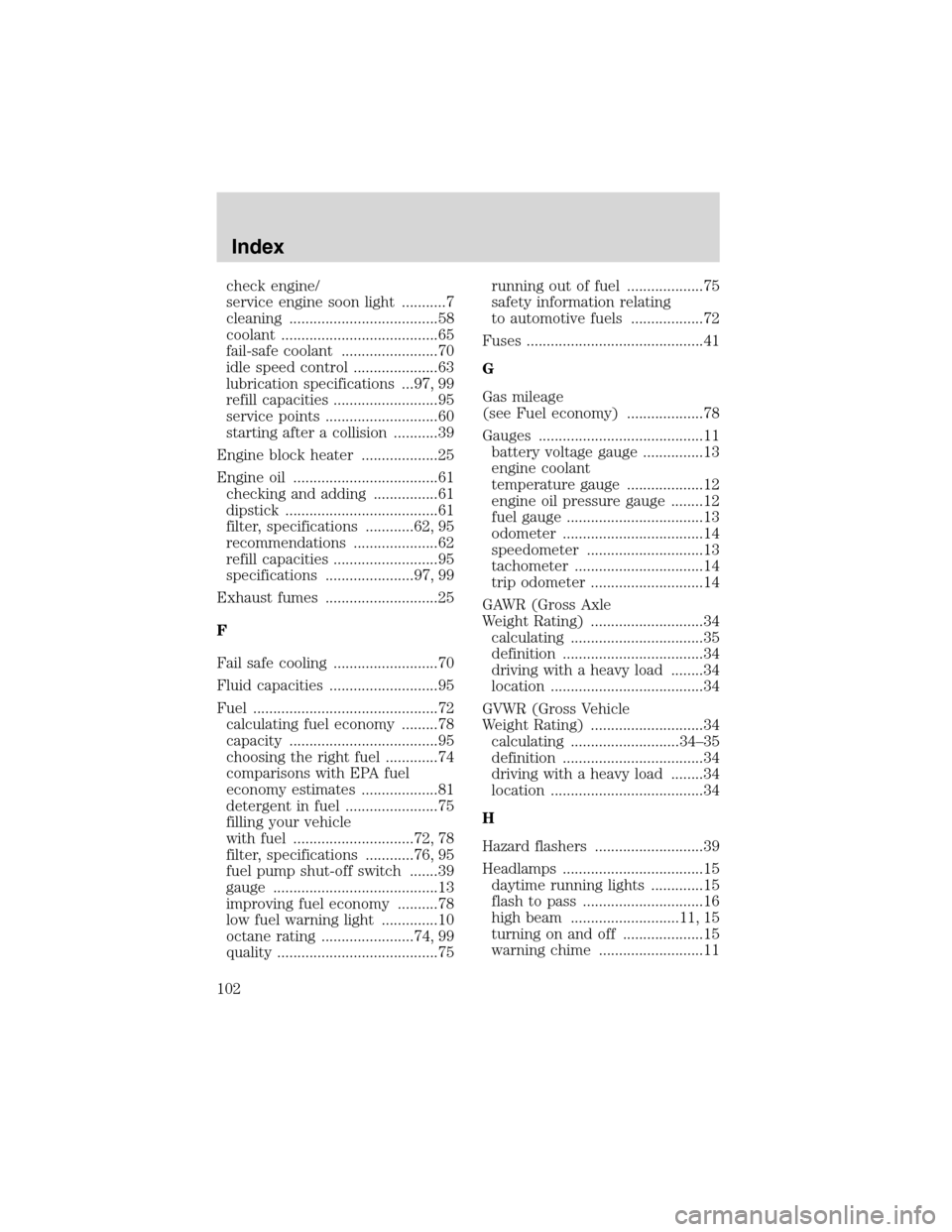Page 4 of 104

BREAKING-IN YOUR VEHICLE
There are no particular guidelines for breaking-in your vehicle. During
the first 1 600 km (1 000 miles) of driving, vary speeds frequently. This is
recommended to give the moving parts a chance to break in.
SPECIAL NOTICES
Emission warranty
The New Vehicle Limited Warranty includes Bumper-to-Bumper
Coverage, Safety Restraint Coverage, Corrosion Coverage, and 7.3L
Power Stroke Diesel Engine Coverage. In addition, your vehicle is eligible
for Emissions Defect and Emissions Performance Warranties. For a
detailed description of what is covered and what is not covered, refer to
theWarranty Guidethat is provided to you along with your Owner’s
Guide.
Notice to owners of Class A Motorhome Vehicles
The Ford Motorhome Chassis is not suitable for producing ambulances or
school buses. In addition, Ford urges manufacturers to follow the
recommendations of the “Ford Incomplete Vehicle Manual,” the “Ford
Truck Body Builder’s Layout Book,” and other pertinent supplements.
Notification of delayed warranty start date and accumulated
mileage
Verify that your recreational vehicle dealer has submitted a Notification
of Delayed Warranty Start Date and Accumulated Mileage (FCS 900) to
Ford Motor Company.
Introduction
4
Page 57 of 104
IF YOU HAVE A SERVICE CONCERN, PLEASE FOLLOW THESE
STEPS:
1. Call our Motor Home Customer Assistance Center(1–800–444–3311)
which is available 24 hrs/day. If inspections or repairs are required let the
assistance center make an appointment for you at the most appropriate
repair location in your area. Please have the following information ready
before you call:
•Vehicle Identification Number
•Current Mileage
•A Summary of Your Concern
2. When you arrive at the repair location explain your concern fully to
the service writer. If your concern is resolved please contact
(1–800–444–3311)and advice them accordingly. If not...
3. Ask to see the Service Manager and review your concern with him. If
you are still not satisfied...
4. Contact(1–800–444–3311)and our Motor Home Customer
Assistance Center will assist you and or the repair location as needed.
Customer assistance
57
Page 65 of 104

the engine must relearn its idle and fuel trim strategy for optimum
driveability and performance. To begin this process:
1. With the vehicle at a complete stop, set the parking brake.
2. Put the gearshift in P (Park), turn off all accessories and start the
engine.
3. Run the engine until it reaches normal operating temperature.
4. Allow the engine to idle for at least one minute.
5. Turn the A/C on and allow the engine to idle for at least one minute.
6. With your foot on the brake pedal and with the A/C on, put the
vehicle in D (Drive) and allow the engine to idle for at least one minute.
7. Drive the vehicle to complete the relearning process.
•The vehicle may need to be driven 16 km (10 miles) or more to
relearn the idle and fuel trim strategy.
•If you do not allow the engine to relearn its idle trim, the idle
quality of your vehicle may be adversely affected until the idle
trim is eventually relearned.
If the battery has been disconnected or a new battery has been installed,
the clock and the preset radio stations must be reset once the battery is
reconnected.
•Always dispose of automotive
batteries in a responsible manner.
Follow your local authorized
standards for disposal. Call your
local authorized recycling center
to find out more about recycling
automotive batteries.
ENGINE COOLANT
Checking engine coolant
The concentration and level of engine coolant should be checked at the
mileage intervals listed in the scheduled maintenance guide. The coolant
concentration should be maintained at 50/50 coolant and water, which
equates to a freeze point of -36° C (-34° F). Coolant concentration
LEAD
RETURN
RECYCLE
Maintenance and specifications
65
Page 102 of 104

check engine/
service engine soon light ...........7
cleaning .....................................58
coolant .......................................65
fail-safe coolant ........................70
idle speed control .....................63
lubrication specifications ...97, 99
refill capacities ..........................95
service points ............................60
starting after a collision ...........39
Engine block heater ...................25
Engine oil ....................................61
checking and adding ................61
dipstick ......................................61
filter, specifications ............62, 95
recommendations .....................62
refill capacities ..........................95
specifications ......................97, 99
Exhaust fumes ............................25
F
Fail safe cooling ..........................70
Fluid capacities ...........................95
Fuel ..............................................72
calculating fuel economy .........78
capacity .....................................95
choosing the right fuel .............74
comparisons with EPA fuel
economy estimates ...................81
detergent in fuel .......................75
filling your vehicle
with fuel ..............................72, 78
filter, specifications ............76, 95
fuel pump shut-off switch .......39
gauge .........................................13
improving fuel economy ..........78
low fuel warning light ..............10
octane rating .......................74, 99
quality ........................................75running out of fuel ...................75
safety information relating
to automotive fuels ..................72
Fuses ............................................41
G
Gas mileage
(see Fuel economy) ...................78
Gauges .........................................11
battery voltage gauge ...............13
engine coolant
temperature gauge ...................12
engine oil pressure gauge ........12
fuel gauge ..................................13
odometer ...................................14
speedometer .............................13
tachometer ................................14
trip odometer ............................14
GAWR (Gross Axle
Weight Rating) ............................34
calculating .................................35
definition ...................................34
driving with a heavy load ........34
location ......................................34
GVWR (Gross Vehicle
Weight Rating) ............................34
calculating ...........................34–35
definition ...................................34
driving with a heavy load ........34
location ......................................34
H
Hazard flashers ...........................39
Headlamps ...................................15
daytime running lights .............15
flash to pass ..............................16
high beam ...........................11, 15
turning on and off ....................15
warning chime ..........................11
Index
102